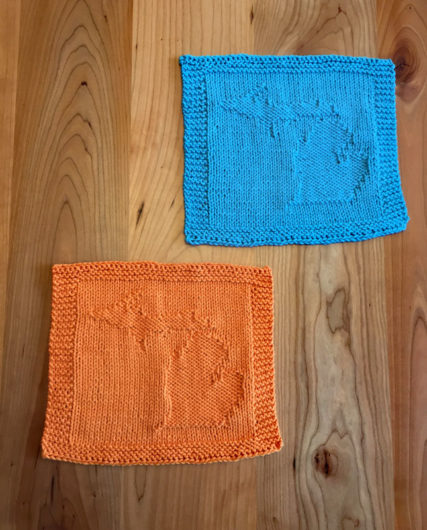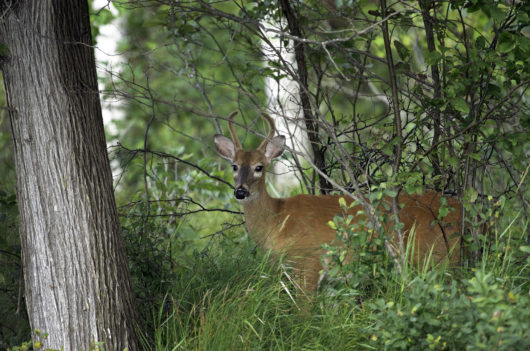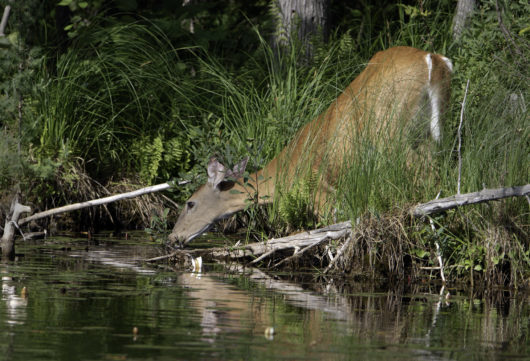Long Lake yielded a robust crop of muskrats this year. For several days in a row we met up with this individual every trip through the narrows, often on our passages both coming and going. You’re wondering how we know it was the same one? He has an unusual habit of floating on the surface with his long tail pointed up out of the water. That is so not a smart move for a muskrat. They aren’t particularly large and would make an excellent meal for a bald eagle or even a hungry mink or big snapping turtle. And, although muskrats are typically active at night and near dawn and dusk, Long Lake’s muskrats apparently didn’t get that message this year. Because they’ve been moving about a great deal in the daytime.
They are Ondatra zibethicus, the only species in the genus Ondatra and the tribe Ondatrini. Muskrats are rodents. You can’t look at that long hairless tail and think otherwise. Speaking of the tail, it’s an interesting muskrat bit. It has no fur, but it’s covered with scales and is somewhat vertically flattened. Muskrats are mostly aquatic, but when they walk on land it’s that flattened tail dragging behind them that makes their tracks easy to identify.
Keep a lookout near the shoreline, especially in the north section of the narrows just before it opens up into the bigger lake. They’ve also been very busy near the shore just to the south of the small island in the lower lake. If you see a bundle of greenery making its way through the water, that will be one of our muskrats gathering food. They are busy foraging, presumably bringing dinner home to the burrow where they stash their litter. But they also stop swimming and fill their own bellies. Keep a good lookout around the yellow water lilies. That’s a special treat for muskrats. And they look quite comical as they munch away on the long water lily strands.
















